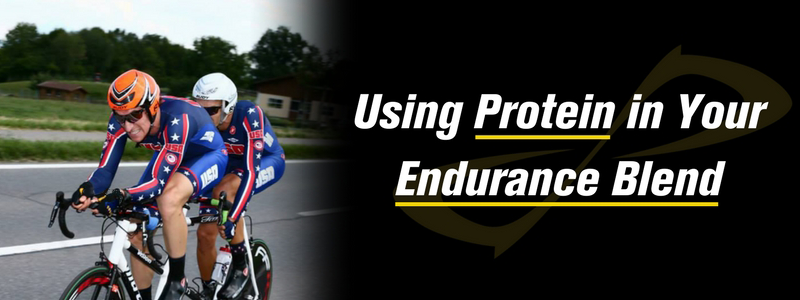Why Multiple Carbs?
- 6 Mar 2018

Despite what some folks in the endurance world may try to tell you, science has proven time and time again that carbohydrate is the body’s preferred source of energy.
Sure the body can operate solely off of fat and ketone bodies (when you force your body into an metabolic adaptation called "ketosis"), but it will probably feel like you're fighting an uphill battle.
While intentional under-fueling may have some benefits for recreational fitness-goers, under-fueling in athletes will lead to under-performance. Carbohydrate (specifically glucose) is the best fuel for your muscles. When we limit the availability of this fuel source, we limit the muscle’s ability to perform. And let’s face it, we all want to perform at our best, so why not provide the body what it wants?
How much and what type of carbohydrate should we be taking in?
When the body is active (and in a normal metabolic state), the muscles oxidize carbohydrate in the form of blood glucose for energy. Longer endurance efforts require a steady supply of blood glucose in order to sustain energy over hours of training and racing. But the amount and type of carbs that you need to consume in order to keep the muscles fueled depends largely on the duration and type of activity.

The average body can absorb and oxidize 60g of a single carbohydrate source per hour.1 This equals just 240 calories! Some of us, especially males and those who have a larger build, are going to need to supplement more than 60g of carbs per hour. This is where multiple forms of carbs comes into play.
When you are fueling with only a single carbohydrate, the transporter proteins involved in absorption become saturated at a rate of ~60 g/hour. Once these transporters become saturated, simply ingesting more of the same source of carbohydrate will not result in greater absorption.1-4
Fortunately for us endurance athletes, studies show that consuming a combination of carbohydrates improve carb oxidation rates well over 60g/hr. In fact, with training and the right combination of carbohydrates, the body is capable of oxidizing up to 90 grams of carbohydrate per hour.2

Studies have shown oxidation rates as much as 75% higher when using multiple carbohydrate sources vs. just glucose alone! By fueling with different sources of carbs, that use different intestinal transporters for absorption (aka “multiple transportable carbohydrates”), your body can absorb more calories, providing the readily utilizable fuel that your muscles are craving.1-4
In addition to being able to absorb more calories, there are other benefits to fueling with a variety of carb sources including a lower risk of GI issues. Research shows that using a product that contains multiple forms of carbohydrate can increase fluid delivery (read more: Osmolality 101) and oxidation efficiency, which decreases the likelihood of experiencing gastric distress when you’re out performing.1-4
Here at INFINIT, our sports nutrition solutions are designed from evidence-based research. This is why our products are formulated with multiple different sources of carbohydrates – including maltodextrin, dextrose, sucrose (in the form of non-GMO cane sugar), and fructose – allowing for optimal absorption and improved performance during endurance training and racing.
Dextrose provides simple and quick absorbing glucose. Maltodextrin is a complex, long-chained glucose polymer that provides a slower absorbing source of glucose as it is broken down and digested. Sucrose falls under the "disaccharide" carbohydrate family, meaning it is made of two "monosaccharides" - glucose and fructose. Using non-GMO cane sugar as the natural sweetener in our products provides the body a source of both glucose and fructose.
Curious about what sources of carbohydrates are best for your training and racing?
Read more about the multiple carb containing products below or speak to an INFINIT Nutrition Formulation Specialist and we’ll help get you pointed in the right direction!
:GO FAR and :GO FAR for Women

GO FAR is our cornerstone preset formula specifically designed for endurance training and racing of 3+ hours. It blends three different carbohydrate sources (maltodextrin, glucose and sucrose) and enables your body to process calories more efficiently than most other products out on the market.
:GO FAR for Women is designed to be lower in both calories and protein, and have a lighter level of electrolytes than original :GO FAR.
:TRiPWIRE

TRiPWIRE fuel shot is a concentrated source of carbs and electrolytes designed for easy carrying. It contains four different carb sources (maltodextrin, glucose, fructose, and sucrose) for maximum absorption with no stomach distress.
CUSTOM Formulas

When customizing a formula using the OSMO-FITTM slider system, the Calories slider gives you control over how many carbs are in your Custom Mix, and the Flavor and Carbohydrate sliders give you control over what typesof carbs (maltodextrin, glucose, and sucrose) your Custom Mix contains.
Calories Slider

The Calories Slider gives you control over how many carbs are in your fromula by allowing you to set the total amount of calories per serving (2 scoops) of your custom mix.
If your formula is protein-free, all calories will come from carbohydrate (4 calories per gram of carbohydrate).
If your formula contains protein, the protein will contribute to your calorie content as well (4 calories per gram of protein).
Flavor Slider

The Flavor Slider controls the flavor strength of your Custom Mix. This one of the sliders that controls what type of carbs are in your formula. Since our flavors are made with non-GMO cane sugar, the position of the Flavor Slider will affect the amount of sucrose (glucose + fructose) in your formula.
When the Flavor Slider is set to the left or “Low” side of the scale, your formula will have light flavor and your carbohydrate sources will come from dextrose and maltodextrin primarily.
When the Flavor Slider is set to the right or “High” side of the scale, your formula will have a strong flavor and your carbohydrate sources will come from maltodextrin, sucrose, as well as dextrose.
Carbs Slider

The Carbs Slider is the other sliders that controls what type of carbs are in your formula. It allows you to manipulate the levels of simple and complex carbohydrate in your formula.
When the slider is set towards the left or the “Speed” side of the scale, your formula will contain a higher proportion of quick absorbing glucose (dextrose).
When the slider is set towards the right or “Endurance” side of the scale your formula will contain mostly slower-absorbing maltodextrin.
References
- Jeukendrup, A.E. Multiple Transportable Carbohydrates and Their Benefits.
- Asker E. Jeukendrup (2008) Carbohydrate feeding during exercise, European Journal of Sport Science, 8:2, 77-86, DOI: 10.1080/17461390801918971
- Jeukendrup A. A Step Towards Personalized Sports Nutrition: Carbohydrate Intake During Exercise. Sports Medicine (Auckland, N.z). 2014;44(Suppl 1):25-33. doi:10.1007/s40279-014-0148-z.
- Asker E. Jeukendrup (2011) Nutrition for endurance sports: Marathon, triathlon, and road cycling, Journal of Sports Sciences, 29:sup1, S91-S99, DOI: 10.1080/02640414.2011.610348.







